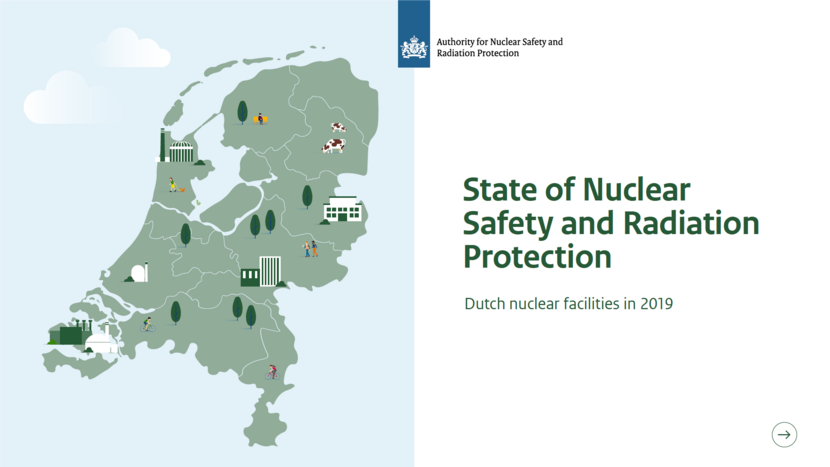Report 'The State of Nuclear Safety and Radiation Protection Report' available in English
The first State of Nuclear Safety and Radiation Protection report, with the subtitle ‘Dutch nuclear facilities in 2019’, presents the international system that is designed to guarantee nuclear safety and to protect people and the environment against ionizing radiation. It also gives details of the safety situation at the Netherlands’ nuclear facilities in 2019.
In the Netherlands, there are six sites that house nuclear facilities, which involve a range of applications, ranging from energy generation to medical diagnosis and treatment, and from scientific research to industrial use.
The State of Nuclear Safety and Radiation Protection report specifies the way in which each of these sites complies with the safety functions set out in the national (or international) system.
Milestone
The primary responsibility for a facility’s nuclear safety lies with the licensee. As an independent authority in the area of nuclear safety and radiation protection in the Netherlands, the ANVS is empowered to grant such licences and to supervise compliance with them. Where necessary, it can also take enforcement action.
The Chair of the Board, Annemiek van Bolhuis, points out that “For the ANVS, the first State of Nuclear Safety and Radiation Protection report is one of the most significant milestones since its establishment in 2015. In the Netherlands, work on nuclear safety is an ongoing process, most of which takes place behind the scenes. Accordingly, we were very keen to shed more light on what this work involves, and on its outcomes. Rather than focusing purely on our own role, we wanted to tackle the entire system – from the International Atomic Energy Agency (IAEA) to licensees here in the Netherlands.”
Conclusions
The State of Nuclear Safety and Radiation Protection report specifically addresses developments at nuclear facilities in 2019, including those involving radiation protection.
Throughout the year, the three safety functions of nuclear safety (controlling reactivity, cooling the fissile materials, and containing the radioactive materials or fissile materials) were guaranteed. As far as reasonably achievable, the safety provisions at the facilities are state-of-the-art.
All of the licensees made adequate efforts to keep occupational exposure to ionizing radiation and the discharge of radioactivity to air and water, as low as reasonably achievable. At every licensee’s site, occupational exposure to ionizing radiation is within statutory limits, and within their self-imposed dose constraints. The discharges of radioactivity to air and water remained well below the set limits.
Future State of Nuclear Safety and Radiation Protection reports
The importance of nuclear safety and radiation protection is not limited to nuclear applications alone. Future State of Nuclear Safety and Radiation Protection reports will also cover the safety situation with regard to other uses of radiation.
